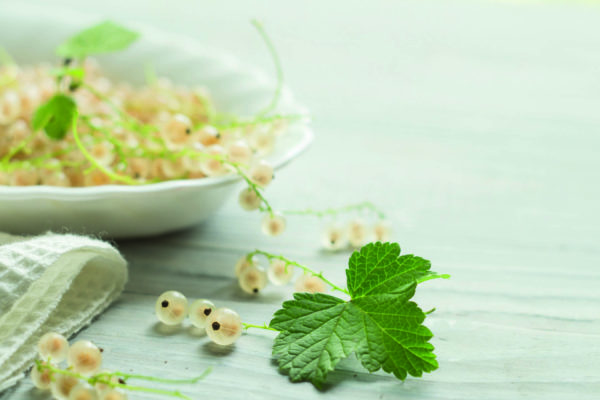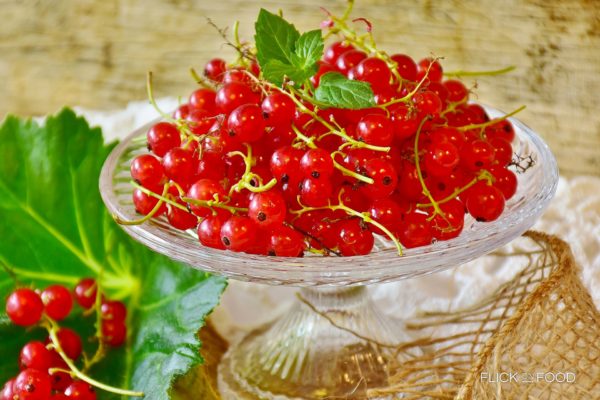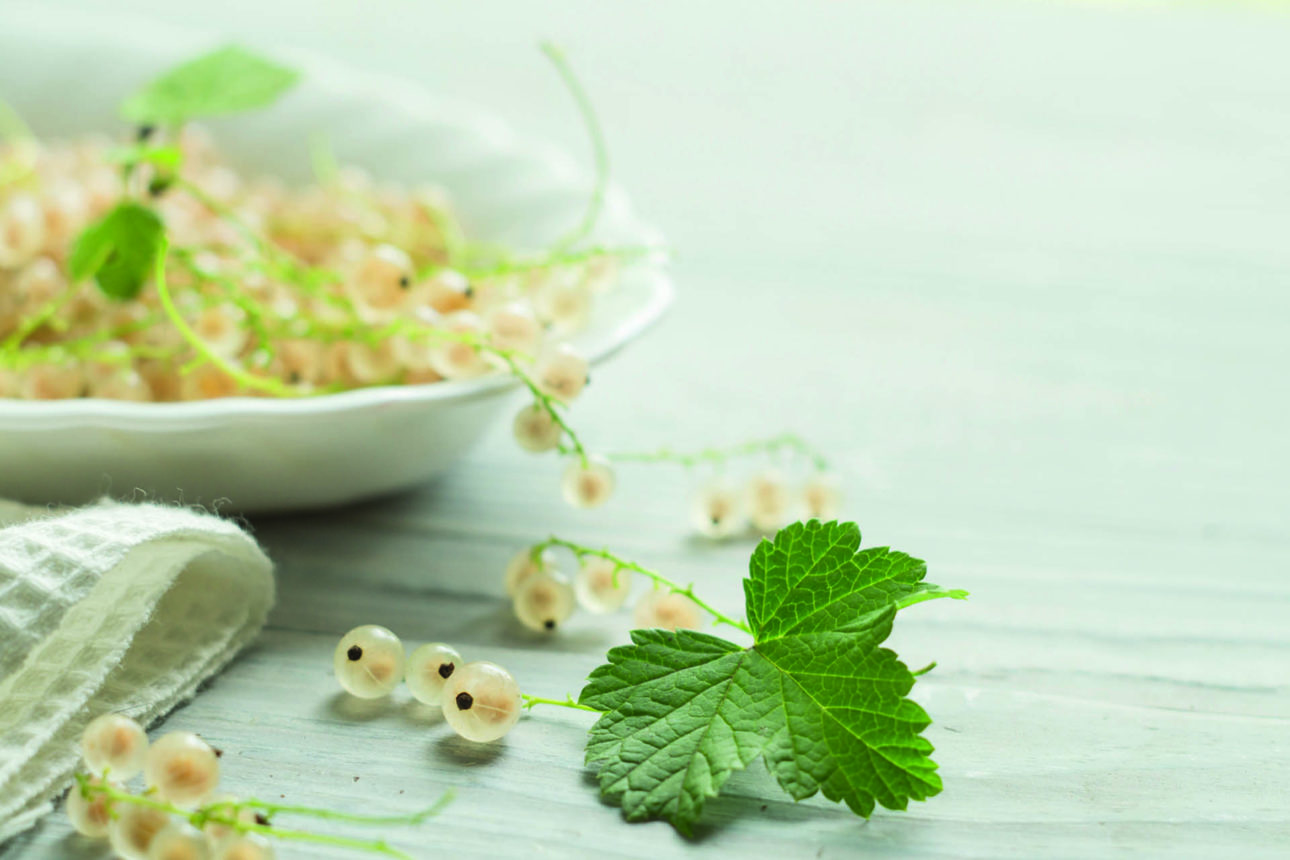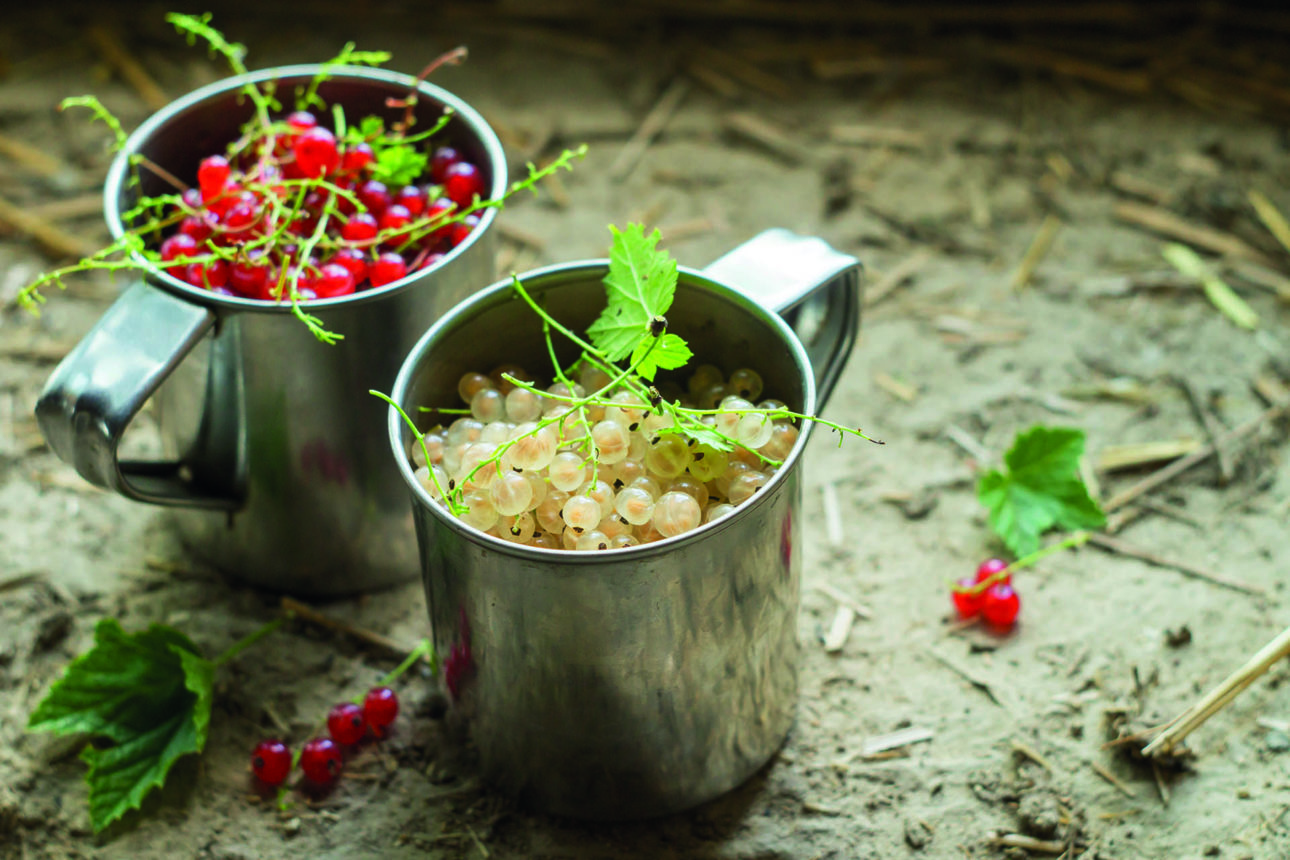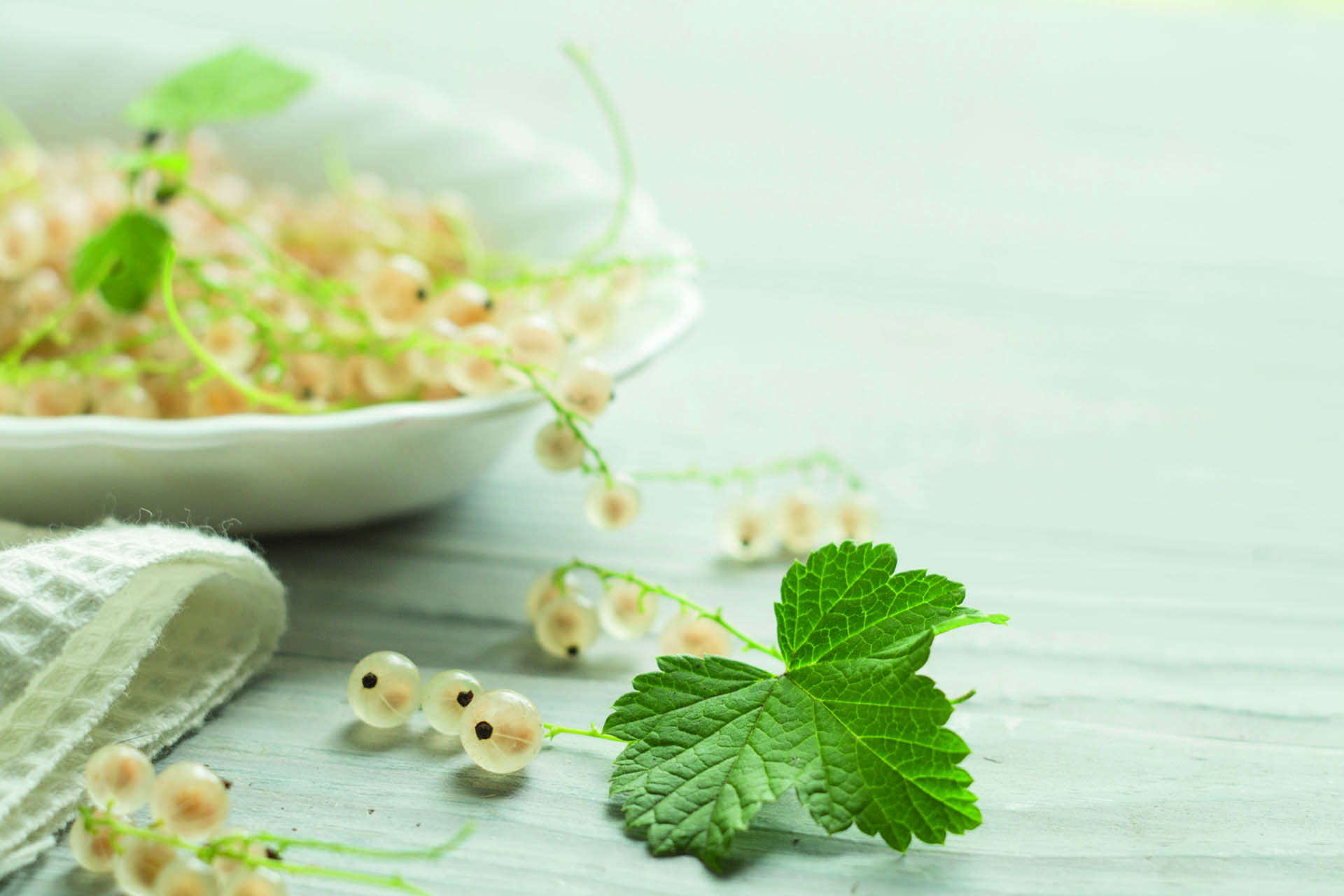
One of the rarest and most elegant types of currant… the best time to try them is July!
Origin
Currants are a fruit that grow on a shrub of the same name. They grow in bunches of about 20, and are small and round with a thin skin, much like grapes. The plants grow wild in humid forests of Central Europe, northern Asia and southern America. The name currant comes from an Arabic word meaning ‘sour’. They belong to the Glossuraliacee- Sassifragacee family, which is split into the varieties ribes nigrum (with dark fruit), ribes rubrum (with red fruit), and ribes sativum, or the white currant. It’s a fairly uncommon variety, with sweet fruit that look a bit like transparent pearls, elegant and refined. White currants are widespread around the Alps, and comprise varieties like Primis and Blanda. The harvest period depends on the variety. Red and black currants are picked from June to September, while white currents go from June to August. July is when you can taste currants at their very best.
Cook It
They’re perfect for decorating desserts like ice cream, fruit salads and more. Their tart flavor creates an excellent contrast for the taste buds. They’re also much loved as a base for preserves and syrups, and are sweeter than red currants. They are highly perishable, so should be consumed immediately or kept in a cool place. Currants are also perfect when paired with fish, especially mackerel, because they create a sweet contrast. It’s a great dish for a bit of energy in the summertime.
Did you know that?
They are rich in nutritional value: citric and malic acid, vitamin C, flavonoids, polyunsaturated acid and other trace elements. They are sharp but refreshing, as well as anti-inflammatory, and have diuretic and cleansing properties, so they’re perfect in the summertime because they help prevent swelling and heaviness in the legs. All of the currant varieties contain high amounts of fiber, sugars, organic acids and pectin.



